We're Sooooo Back (Overanalyzing a Hulu True Crime Miniseries)
'90s teens and the ethical quandries of writing about crime
Did you miss us YWSWers??
You might have noticed that Mallika and I have been on a spring/summer hiatus. In fact, many of you have noticed which has been wonderfully validating for us. Who would have guessed that you care if we live or die??!
It’s my fault we haven’t published anything in a month or so. I’ve been in somewhat of a TV rut since March. My ADHD-addled brain knows that a person exists somewhere in me who wants to clean my room or has the emotional stamina to look at my finances, for instance, but instead of digging inside of me and dragging her out, I sit and wait for her to emerge like going to the zoo and wondering if the polar bears will pop their heads out of those sad little ice caps. Oh she’s not out today? Bad luck, try again tomorrow! I’ve been doing something similar with TV, just waiting for that one performance or rewatch that’s going to grab me and give me so many things to think about at once I simply must work through them like a therapy session in a newsletter essay.
Well fear not (mostly saying this to Mallika), I found a goldmine of newsletter fodder in a rather predictable place, a YWSW fan favorite now that I think about it: a Hulu true crime miniseries.
But calling Under the Bridge a true crime story in the traditional sense is not entirely accurate. The series, which stars Riley Keough and Lily Gladstone and depicts the real life murder of teenager Reena Virk, is moonlighting as your run-of-the-mill detective show. But through a heavy fog of adjoining storylines and a cast of complex characters, it crystallizes into something different.
(From this point on, there will be spoilers for the show FYI.)
The story begins in 1997 in Victoria, Canada. Virk, just 14 years old, is going toe-to-toe with a group of mean girls who smoke cigarettes inside their rooms at the foster home Seven Oaks — police and community members sometimes refer to them as “Bic” girls, implying they’re as disposable as a lighter. The teenage antics turn savage and deadly when Reena leaves for a party one night and never returns home. Police later find footage of Reena being led by nearly a dozen of her peers down the steps leading to the underbelly of a bridge crossing the Gorge waterway in Victoria. They eventually find her body in the water, beaten and drowned.
Early in the eight-episode series that aired earlier this year, the Virks take the spotlight. The show is graced with stellar performances by Archie Panjabi (getting her bag while Julianna Margulies was celebrating Pride in a Lockheed Martin float, probably) and Ezra Faroque Khan as Reena’s parents, Suman and Manjit. And Vrikita Gupta deserves her flowers for her portrayal of Reena. She plays a teenager desperate to be accepted in the mostly-white Victoria with an almost unbearable realness. Even as the story starts to veer away from her, Gupta’s performance keeps Under the Bridge grounded in Reena, and not just the spectacle of her murder.
But as it goes on, Under the Bridge, based on a book of the same name by Rebecca Godfrey and adapted by first-time showrunner Quinn Shephard (who apparently is just one year older than me??? Seems illegal but okay), can’t exactly decide what it wants to be. It kicks off like a Cruel Summer-esque exploration of teenage violence. But sprinkled in is the story about a second-generation South Asian family dealing with loss and the challenge of holding onto their faith (as Jehovah’s Witnesses) and culture in a white Canadian town. And eventually, overshadowing all of this is the presence of Godfrey herself.
I’m always fascinated by a showrunner’s decision to position the writer of the text a show is based on as one of its central characters. It continues to baffle me that New York Magazine writer Jessica Pressler, famous for her deep dive on fake-heiress Anna Delvey, allowed and possibly even had a say in Veep’s Anna Chlumsky portraying her as a bumbling pregnant reporter in Inventing Anna. And I’ve been wondering how Shailene Woodley will play novelist Lisa Taddeo in the upcoming adaption of her nonfiction book Three Women, particularly because the two bear no resemblance and there’s hardly a whisper of Taddeo in the book itself.
There are certainly cases where the insertion of the narrator makes sense, but for the most part, it’s unlikely the writer is more interesting than the subject. In Inventing Anna, I was bored anytime the story zoomed back to Pressler, renamed Vivian Kent. I tuned in to watch the bratty Russian who managed to scam a bunch of rich people out of millions of dollars, not a disorganized reporter scrambling to meet a deadline. I’m living that story, baby!
Similarly, in the early episodes of Under the Bridge, the story stalled when it centered Godfrey. Riley Keough was great in Daisy Jones and The Six and Zola, but her portrayal of the brooding novelist was frequently grating. It felt like she was doing a Pacific Northwest impression of Amy Adams’ Camille Preaker in Sharp Objects: the detached but impulsive writer returning to her hometown while dodging demons left and right. Godfrey has no real tie to the Virks or any of the kids who murdered Reena, but is drawn back to Victoria in search of inspiration for her next book, and ends up working out some childhood trauma while sticking her nose into all the feral teens’ business. She does so with the same synthetic gravitas as Preaker, though Keough trades Adams’ cunty side part (which is God in this house) for a bitchy black bob. They both stroll into bars, homes and search parties where no one particularly wants them, and make slightly inappropriate, but somehow understandable, bonds with teenagers. Godfrey, like Preaker, also bones the lead detective, but instead of Chris Messina (The Mindy Project) it’s Lily Gladstone (Killers of the Flower Moon).
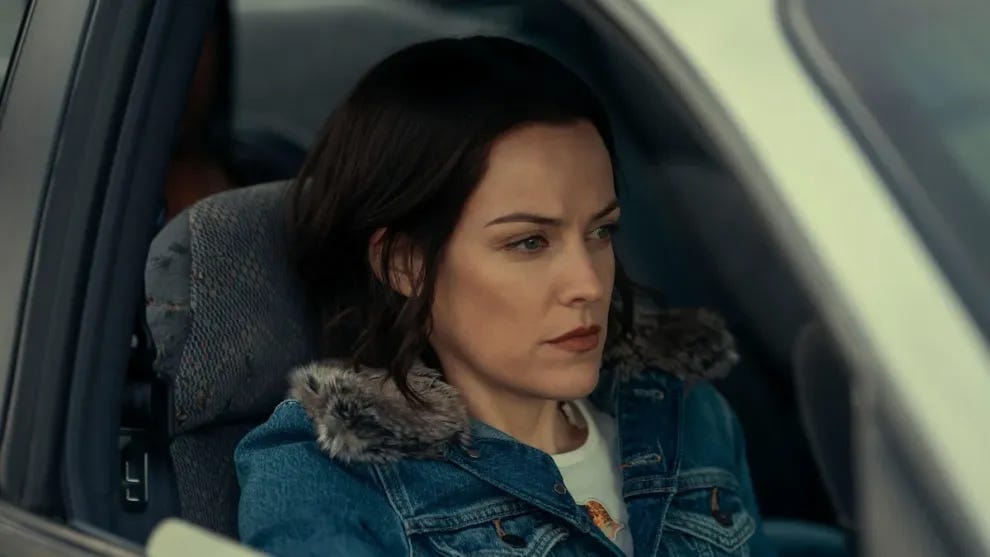
The show was promoted with both Gladstone and Keough on the marquee, but in reality, the insertion of Godfrey as a character nearly renders Gladstone’s Cam Bentland — an intrepid officer who tracks down Virk’s killers — entirely moot. Bentland is the only character in the story who is completely made up, kind of like Andrew Garfield’s Detective Jeb Pyre in another captivating Hulu true crime series Under the Banner of Heaven. And in some ways Gladstone has a nearly identical arc to Garfield, as both characters wrestle with their fraught but deep connections to problematic institutions — Jeb to the Mormon Church and Cam to being a cop and the whiteness she was adopted into (by a police chief played by none other than the Sharp Objects sheriff Matt Craven). The difference is that Pyre’s pursuit of the culprit was integral to the show’s arc. Bentland’s wasn’t. Under the Bridge tells you (at least partially) who killed Reena within the first four episodes. Then it turns into a courtroom drama, and it’s not Bentland’s pursuit of the truth that matters anymore.
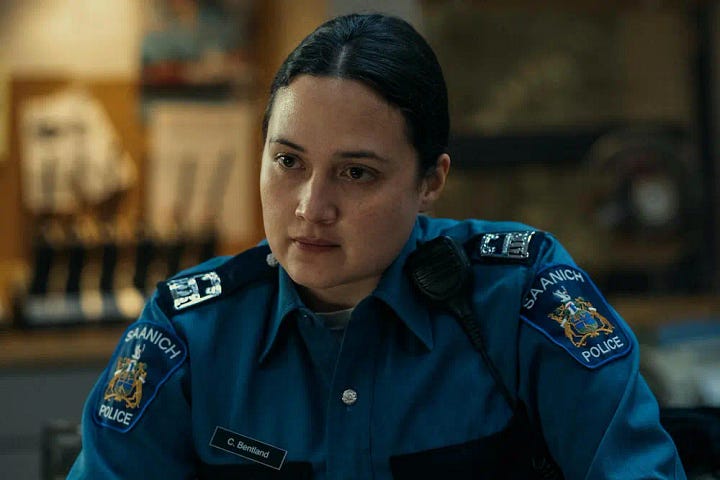
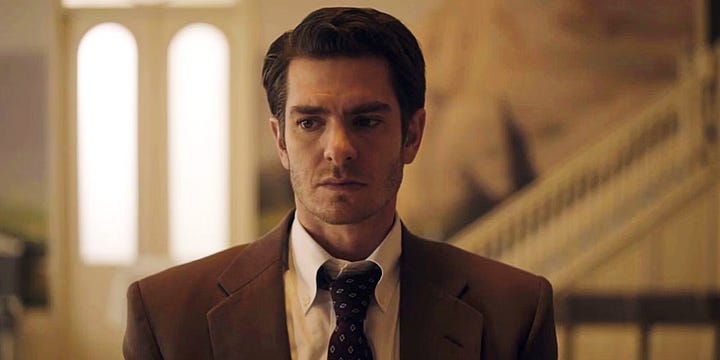
The show, instead, follows Godfrey as she grows close to one of the teen boys involved in the murder, Warren Glowatski (Javon Walton, who is an expert in playing the forgotten child: Euphoria’s Ashtray, Diego’s surprise kid in Umbrella Academy). We come to find that Glowatski played a significant role in killing Reena Virk, but Godfrey finds him sympathetic, particularly in comparison to his partner in crime Kelly Ellard, a privileged and sociopathic white girl played by 16-year-old newcomer Izzy G. who is absolutely giving Eliza Scanlen a run for her money.
Glowatski has been couch surfing since his father left town without him and doesn’t have the lawyers or the resources Ellard has. The tattoo-ed gang-affiliated teen has plenty of reason to be angry with the world. But Walton, who always ends up looking like a wounded Rottweiler, plays him with a signature tenderness. Godfrey, who has her own past mistakes to contend with, sees bits of herself in Glowatski, and latches onto him. She becomes less interested in the justice Reena Virk’s family seeks and more in the injustice kids like Warren face in the system.
Suddenly, Godfrey’s seemingly-pointless role in Under the Bridge became the key to unlocking the series’ potential, not as your traditional true crime who-dun-it but as a reflection on the messiness of writing about crime. While it was a little frustrating to watch the show veer away from the Virks and became an almost In Cold Blood-esque examination of Godfrey and Glowatski’s relationship, you have to admit it's a surprising development. We don’t often see a real examination of victims and perpetrators, punishment, forgiveness and the power outsiders like Godfrey have to weave the narrative on television.
By the end of the series, I saw more of myself than I’d like to admit in Keough’s portrayal of the angsty writer. She squirms in her self-assigned role of the impartial observer, telling herself she’s working to get at the “truth” of the gruesome ordeal for Reena’s sake. But in getting to know Warren, she becomes further removed from Reena’s family by default. It’s hard to not feel awkward around the Virks when she’s befriended the boy who stood by and watched their daughter drown. Godfrey becomes so attached to Warren she doesn’t even ask him about what he did that night. She’s too afraid to have her perception of his goodness challenged. The subject of her next book shifts to the point that it is no longer about Reena Virk at all, and she drops any effort to learn who Reena actually was.
Godfrey’s behavior on paper seems rather shortsighted, but I can identify with how she got so siloed into Warren’s corner of the story. Those who are facing incarceration or are currently incarcerated usually have more to gain from building a relationship with writers than the families of crime victims do. It's the contrast between the finality of death and the hope of freedom. Even though Warren is facing a lifetime in prison, which is about as bleak as it gets, his fate isn’t set in stone. Godfrey could change the course of his life by telling his story. This is a dynamic I’ve seen firsthand when writing about incarcerated folks — even if all the appeals have been exhausted and the sentence looks final, there’s always a chance that a forgotten lever of the criminal justice system will open a window, a trap door, something leading to freedom. And with that glimmer of hope comes a sense of purpose, especially for writers. As much as we delude ourselves, it’s very rare that our work results in tangible change in someone’s life. But giving a voice to an individual who feels wronged by the justice system could set them free. That kind of power can be intoxicating.
But with a family like the Virks there’s a sense of impotence. Nothing Godfrey writes will bring their daughter back, and the gulf of sadness and loss they feel is harder to reckon with than the more commonplace emotion of guilt. The crux is that Warren can be saved; Reena can’t.
Godfrey isn’t wrong about the injustice of Warren’s situation. Society makes excuses for someone like Ellard, while they’re happy to throw away a kid who’s rough-around-the-edges like Warren. He made a “mistake,” as Godfrey contends, but there was a reason for it. Godfrey determines that this boy has been failed by everyone and everything in his life. And should any person be defined by the worst thing they’ve ever done? I almost always come out on the side of “No, they shouldn’t.” Especially someone who is a true product of their environment, whose institutions and systems have failed them on multiple levels.
But Godfrey and I both need to face the uncomfortable truth that this position, while sometimes righteous, is also often the easier choice. In standing by the living, we can remove ourselves from the darker realities of death, of the human capacity for violence and cruelty and what the consequences for that violence really should be. There’s a reason that the closer Godfrey gets to Warren the more she shies away from the Virks. It’s much easier to lament about the inequality Warren faces when you’re not confronted with the harm he really did cause.
When Warren takes the stand in Kelly Ellard’s trial, he unravels a series of events previously unknown to Godfrey. Although it was clearly Ellard’s idea to kill Reena, Warren was her willing accomplice. It becomes clear that if Warren hadn’t gone along with Ellard’s plan, Reena would very likely still be alive. Godfrey has to leave the courtroom after Warren’s testimony, sobbing and shaken by the truth she so desperately avoided. It’s disorienting to feel confident you know someone’s heart, that deep down they’re a good person, while the devastation of their inexplicable cruelty is looking you in the face.
It’s not wrong of Godfrey to see beyond this heinous act and look at Warren’s seemingly genuine contrition, and the circumstances that led him to doing such a thing. But it’s easy, when wanting to tell this particular narrative, to gloss over the facts that are hard to account for or explain away. Godfrey tries to do this and she gets a bucket of cold water dumped on her by both the Virks and Cam. The moral clarity hit me like a bucket of ice too.
Watching Godfrey wrestle with where her loyalties should lie forced me to reflect on my own writing. I’ve admittedly told stories about people I believe deserve freedom while making very little effort to contact their alleged victims. Victim advocacy, at least in the U.S., is often at odds with criminal justice reform. Right wing prosecutors and politicians use the rights of crime victims as a scapegoat for impeding progress on things like bail and discovery reform. And so sometimes I find myself subconsciously dehumanizing victims and their families, making little effort to learn more about them because as someone who believes in forgiveness and in abolishing most parts of our carceral system, I fear they will stick a wrench in my narrative. Criminal justice reformers are usually the ones shouting that not everything is black and white. But we’re not exempt from flattening inconvenient truths.
I wasn’t expecting Under the Bridge, Keough’s fuckass bob and a half dozen teen performers acting like rent is due to trudge all of this up for me. It wasn’t until I finished the series that I realized Godfrey, in real life, passed away of lung cancer during filming. She was 54. Before she died, she played a significant role in helping Shephard bring the story to life. Learning this, something clicked into place for me. While Under the Bridge tells the ‘90s story in the present tense, it has an air of reflection, of someone looking back on the choices they made, viewing them through a lens of honesty that perhaps can only come with the end of life.
The young Godfrey felt uncomfortable with the finality of Reena’s death, focusing instead on the hope of Warren’s future. But it’s clear that the older Godfrey had become more accustomed to sitting with these dark truths. The final scene of the show returns to the Virks. It frames Suman and Manjit in their daughter’s room. Suman comes across Reena’s Biggie Smalls CD, and the two find a moment of levity in playing the music their daughter loved, albeit that they initially didn’t approve of. Then the CD skips, the music stops and it’s as if Reena has left the room. But as they sit on the bed in silence, Reena looks at them through the door frame. In the final shot, the camera zooms out on the couple and Reena fades out of the frame, never to return.
It’s crushing. And a reminder that the weight of a person torn from the world has no sensical narrative, however we might try to craft one. With all its loose ends and disjointed arcs, maybe Under the Bridge is telling an honest story afterall.
B Plots
Question: Worst TV Detective?
Mallika: If there is one detective who has never once solved a crime it is Detective Fin Tutuola of Law and Order: Special Victims Unit played by Ice-T. This man never has any idea what’s going on and has managed to hold onto his job for 25 years, god bless him. Never forget when he and the team came across the bones of a child from like three decades ago accompanied by nothing but a lunchbox with a Twinkie, and Fin’s first instinct was to ask if Twinkies last forever then bet his partner 20 bucks to take a bite. But Ice is just there to get his check for the next 3,000 seasons of SVU and for that we can’t fault him.
Rachel: I finally watched Amazon Prime’s Deadloch and will nooot shut up about it, so I think I have to say Detective Eddie Redcliffe who proves the old girlboss wisetale that women CAN do anything men can, including being an obtuse, bone-headed cop. Eventually Eddie gets it together but I’m not sure her redemption excuses the Hawaiian shirts and sandals. Runner up is Matthew McConaughey’s Rustin Cohle in True Detective who is the human personification of “I ain’t reading all that.”
C Plots
We’re back on THIS the sixth year anniversary of Sharp Objects premiering on HBO, and there is TV news aplenty, folks.
Severance is in fact coming back, as evidenced by the season two teaser trailer that just dropped, but we’ll have to wait several fiscal quarters. The Ben Stiller-helmed show commentating on work in the modern world will be premiering in January 2025, which seems like a long way away but for innies it will feel like nary a fortnight.
Rachel picked a good time to finally wake up to the genius Amazon Prime Australian sleeper hit Deadloch. The series, which TV Scholar aptly dubbed “Broadchurch but make it funny, lesbian and Australian,” is returning for a second season.
Ryan Murphy is producing an ABC show about a cruise line starring Joshua Jackson. That sentence sounds like a MadLib but it is not.
It’s 2009 again and no, we’re not saying that in reference to a Katy Perry comeback. Hilarie Burton is once again ditching the One Tree Hill cast to be replaced by Robert Buckley, but this time, it’s via the show’s rewatch podcast “Drama Queens.” Burton said it made sense for her to step away from the podcast since her character isn’t in the show beyond season six so she won’t have any behind-the-scenes commentary to offer, but rumors have been swirling about a rift between Burton and one of her co-hosts, Bethany Joy Lenz, for months. There may only be one Tree Hill, but it’s definitely not Burton’s home.
And finally Mallika’s ultimate would! Harry Melling (Queens Gambit…. and Harry Potter but he’s more than just Dudley Dursley, ok!) is apparently about to lose “all sorts of virginities” in a new X-rated movie with Rachel’s ultimate would!1 Alexander Skarsgard. The two are set to star in a “kinky queer romance” titled Pillion. It is being described as “fun and filthy.” To borrow a phrase from Ireland’s finest Ayo Adebiri, we are seated. The theater employees are asking us to leave because it’s “not the 2025 Cannes Film Festival yet” but we’re simply too seated.
alright, this isn’t the best use of the term because who wouldn’t? Rachel’s actual ultimate would! is probably Jimmi Simpson who is the definition of scary hot.

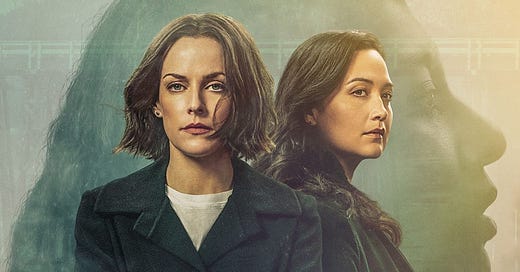



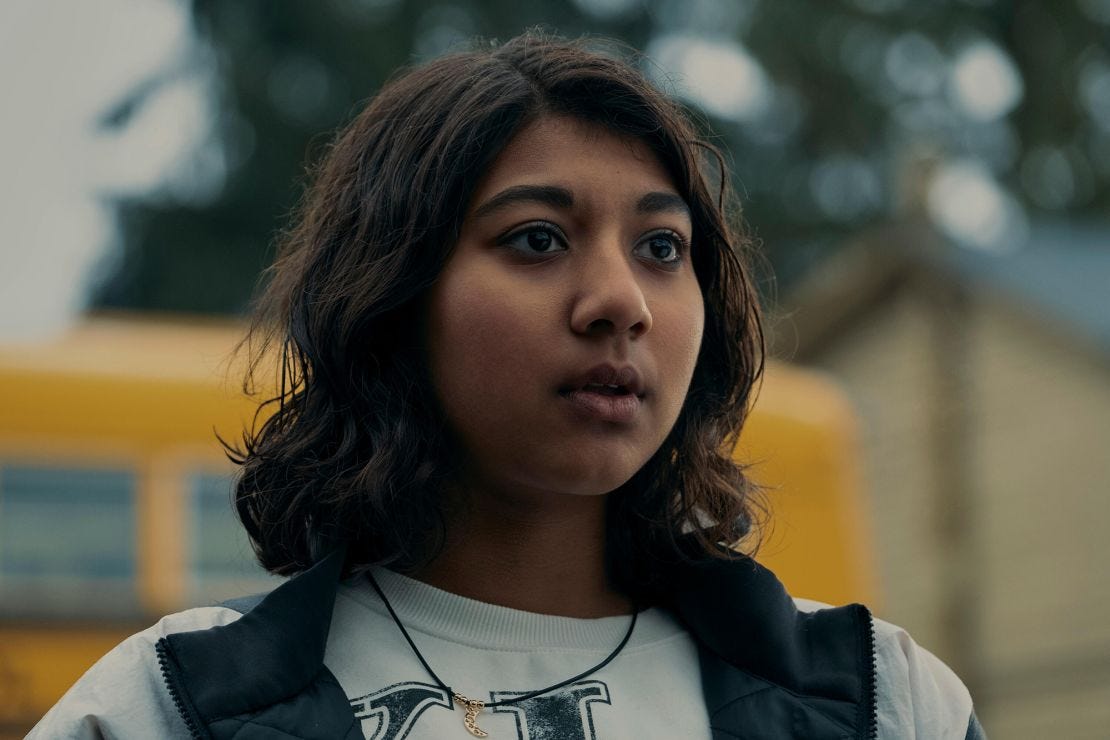
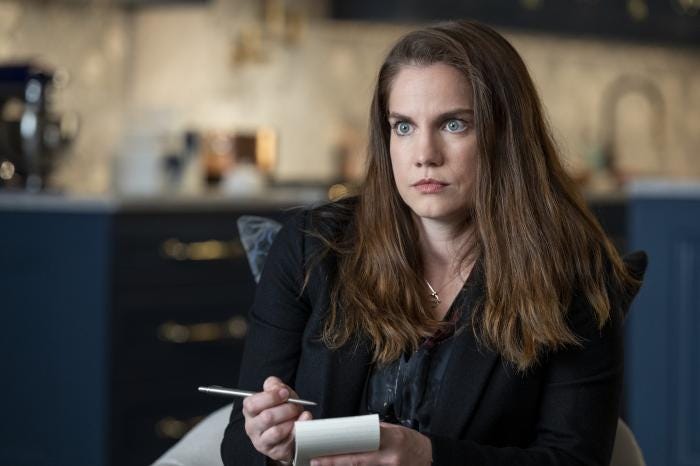
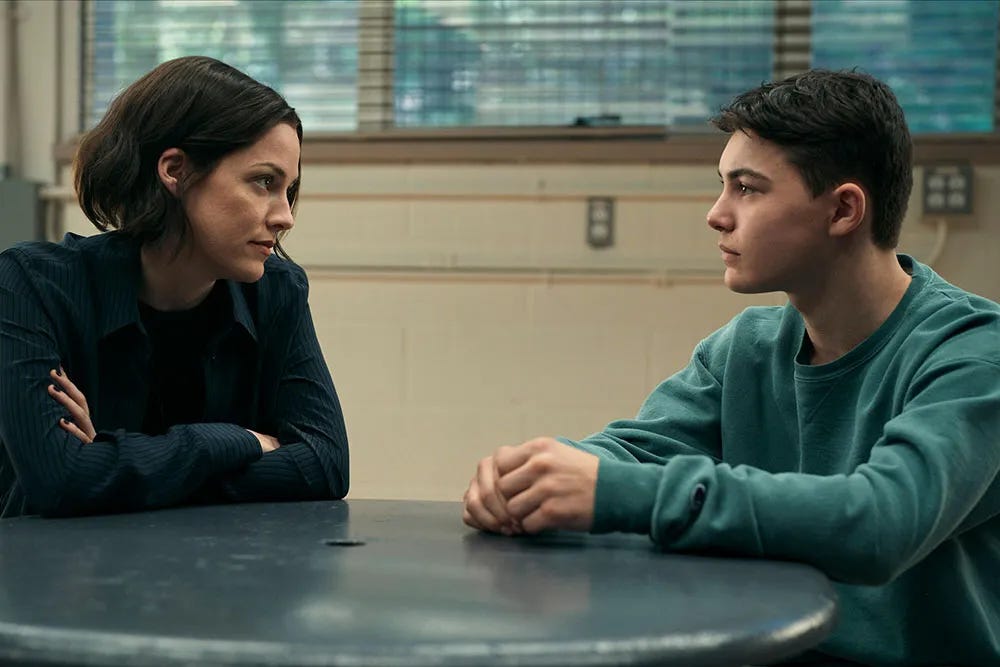
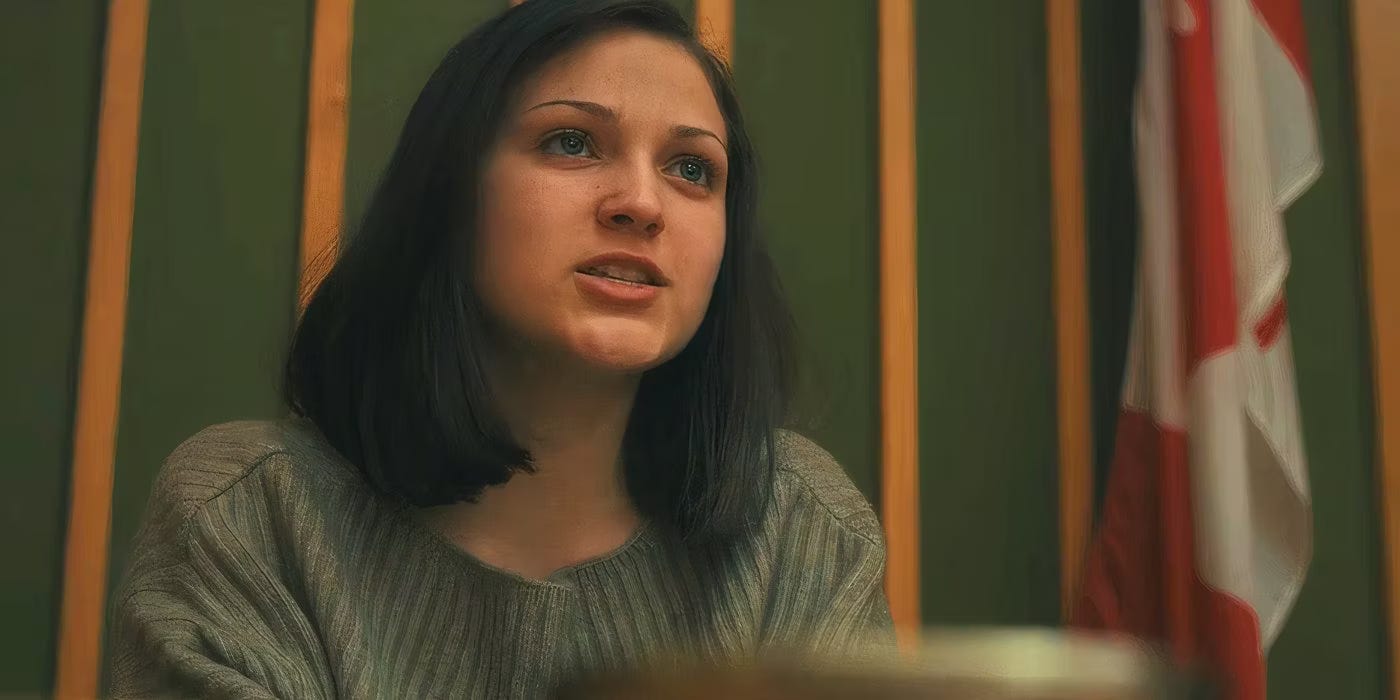

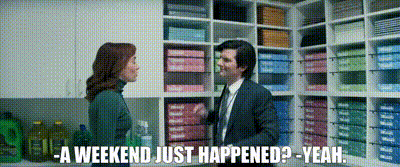
The whiplash of going from deep, engaging questions about the relationship between writers, victims of violence and victims of the carceral state to "Keough’s fuckass bob and a half dozen teen performers acting like rent is due" took me OUT.